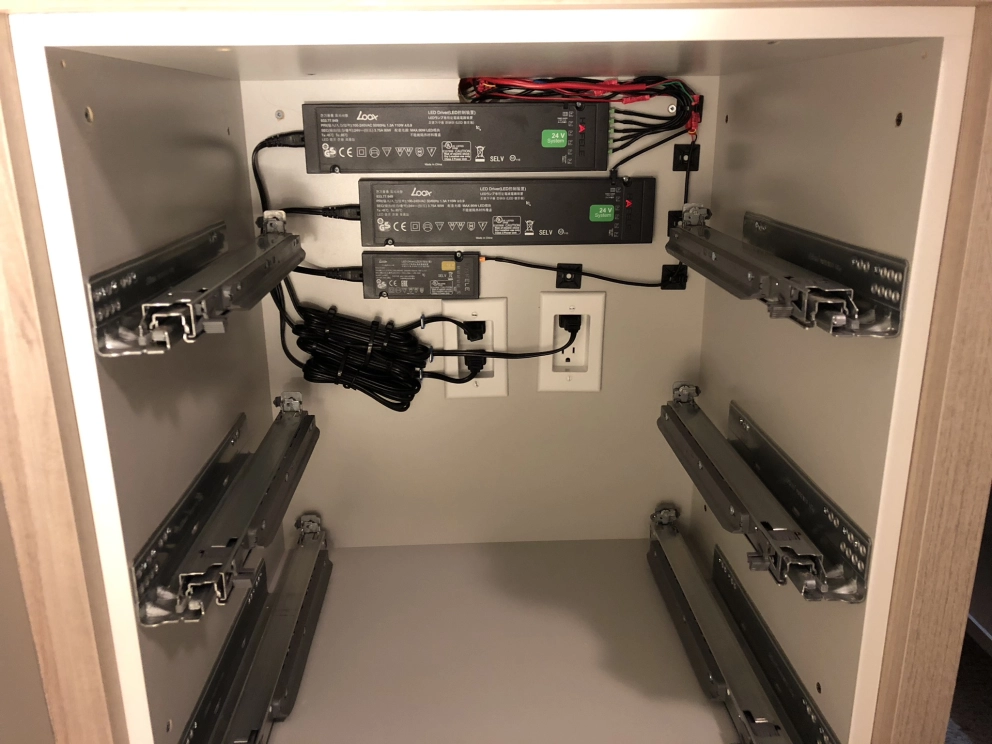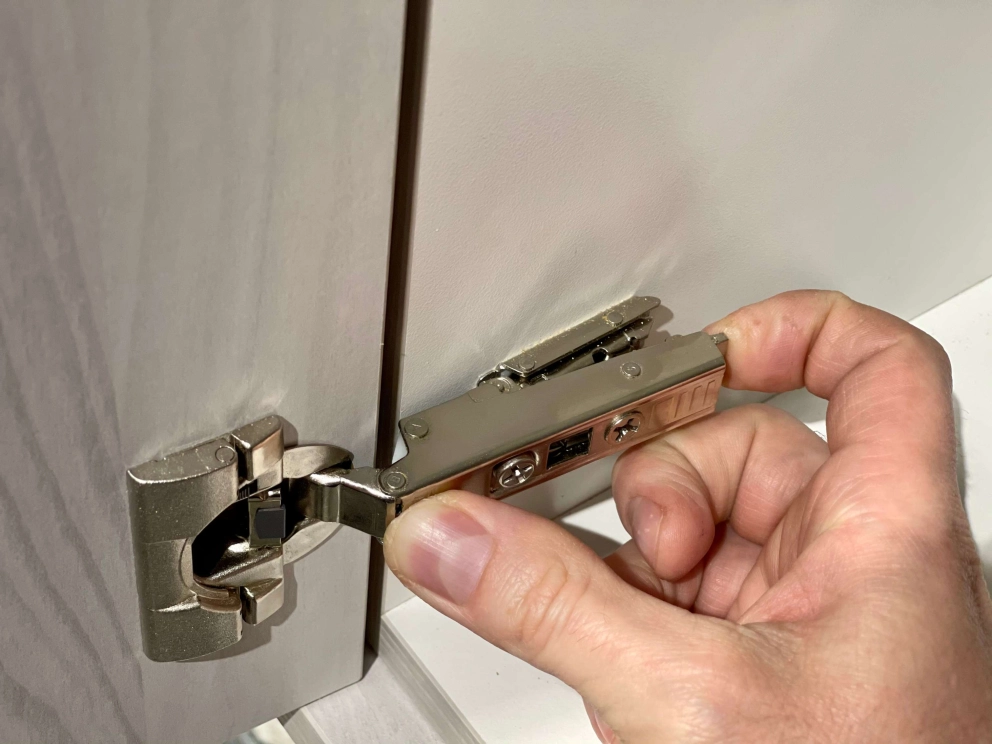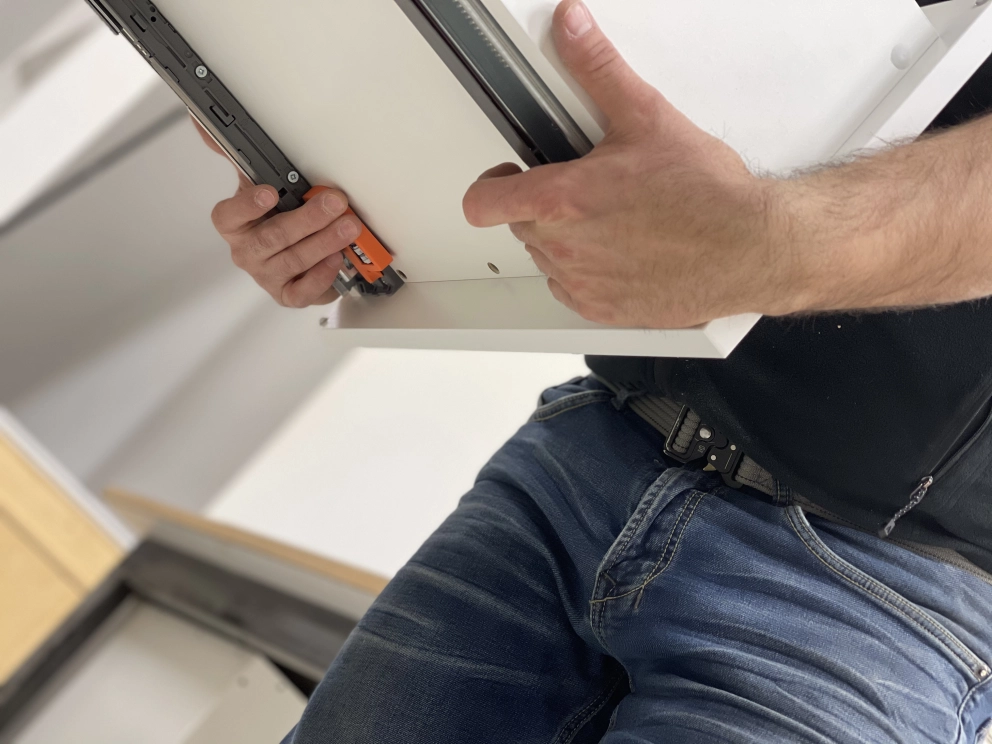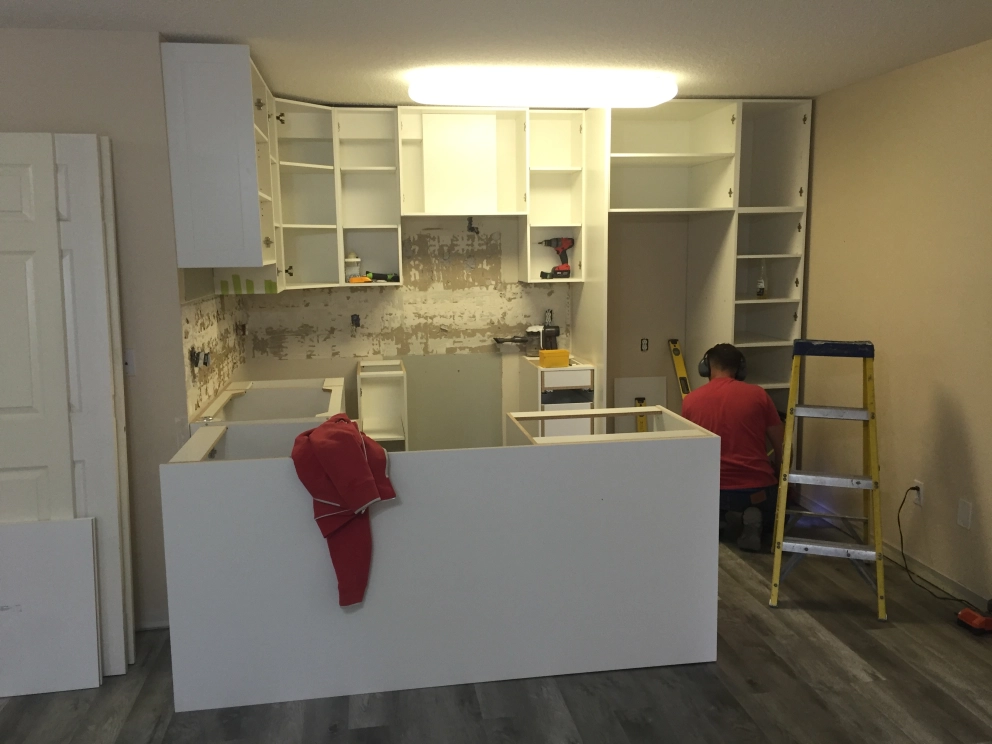How to Remove Kitchen Cabinets?
When it comes to entire kitchen renovation or repainting your cabinets, the first thing to do is to take down kitchen cabinets. Before you start, it's important to have a plan for the entire process. And you may already know what will happen with the units after you remove the old kitchen cabinets. But the important point is how you handle your kitchen demolition. This will impact what you can do next, whether it's replacing the cabinet doors and reusing the cabinets or just disposing of them in the landfill. 
Even if you do not want to deal with cabinet refacing, donating kitchen cabinets to charity requires the units to be in good condition. The process of removing kitchen cabinets plays a pivotal role here. At least you will not spend any additional money for disposal.
Whether you want to reface cupboards or replace them with brand-new ones, the demolition process should be carried out properly. This crucial stage reveals all the hidden aspects of your kitchen - areas where the backs of the cabinets become greasy, indicating a need for better sealing, or spots where the space is tight and fitting in new units might be difficult.
When you take part in demolition cabinets, you better understand the room you’re working with. As a company that has worked with kitchen renovations for many years, Cut2Size encourages customers to learn about every stage of creating a new kitchen. The first step is removing the old cupboards.
6 preparation steps to remove kitchen cabinets
If you decided to take down your old cabinets, here are some steps that should happen before the demolition:
1) The first thing that you will need is protection. If the kitchen is the only area that will be renovated, it is essential to protect your house from dust and mess. To keep the rest of the house safe during demolition, you need to do the following:
- Make sure you wrap the windows to protect curtains from the dust;
- Cover heat registers with dust collecting filters;
- Make dust barriers to separate the renovating rooms from others;
- Protect the floors by making pathways using RamBoard, sold at HomeDepot;
- Protect wall corners with cardboard.
2) After your house is protected, start emptying your kitchen cabinets. Remove all the dinnerware, cutlery, pots and pans. Cabinets have to be empty.
3) If you have under cabinet lighting, electrical work will be required. Contact the electrician to disconnect the power or move the electrical into a new location. 
4) Then, you should remove all the appliances. Make sure you disconnect the appliances properly. If you don’t know how to do it, call the appliance installer. Move the appliances to the other room so they are not on the way while demolition is happening.
5) The very next step before getting to remove old kitchen cabinets is plumbing disconnection. Disconnect all the plumbing fixtures, such as sinks and faucets. Shut off the water to avoid flooding in the house.
6) Countertop removal might be as challenging as the removal of the cabinets themselves. Finding out how the countertop was installed will help to demolish it more easily. One of the most popular ways of installing countertops is by gluing them to the cabinets with silicone. In addition to it, countertop installers use silicone for sealing and waterproofing. For easy countertop removal, you can use the caulk softener. Spray the solution on the joints where you see the seal, and let it absorb and soften. Use the putty knife to separate the caulk from the countertop itself. Carefully push your tool under the countertop until it is loose, and start lifting it. The stone countertop is very heavy, so you might need the help of a few guys to lift it. If you have a laminate countertop, cut all the caulk to make removal more comfortable and clean. Carefully push your pry bar underneath the countertop and start loosening it, then lift the laminate. The advantage of laminate countertops is It is not as heavy as stone.
Before starting the demolition, decide on what you will do with old kitchen cabinets, whether you will recycle them, reuse them, donate, or dump them.
Most homeowners don’t want to waste their old kitchen cabinets. How to repurpose kitchen cabinets? Old cabinets can be repurposed to be used as a media unit, entrance bench, basement storage, garage cabinets, bathroom vanities, laundry storage, dressers, etc. Depending on homeowner's creativity, cabinets can be utilized, modified, or repainted. Therefore, before changing kitchen cabinets, think about reusing them in the other areas of your house. To reuse the old kitchen cabinets, you have to remove the kitchen cabinets without damage. You should also think about how to rearrange kitchen cabinets, so they fit into a new space. If you are creative and handy enough, you will find a way to reuse old kitchen cabinets to make your house more organized and beautiful.
How to remove the base and upper kitchen cabinets?
Demolition of the cabinets requires specific tools such as:
- drill,
- hammer,
- pliers,
- utility knife,
- screwdriver,
- safety glasses,
- garbage bin or a big dumpster if you are getting rid of them.
Without proper toots, the demolition process is not going to be efficient. Demolition of different types of cabinets requires different strategies. For example, suspended kitchen cabinets have to be taken down differently than removing built-in cabinets or pulling down upper kitchen cabinets.
The very first step in kitchen demolishing is taking down upper cabinets. If you want to reuse old kitchen cabinets, it is crucial to remove them without damage. Start the removal by taking down the crown mouldings or headers. If the header is up to the ceiling, it is scribed to the shape of it. In addition to it, most of the cabinet installers use caulk to fill the tiny gap between the cabinets’ header or filler to the ceiling and walls. Use the utility knife to cut the caulk, and it is going to help you separate it more manageable from the ceiling and prevent ceiling and floor damage. Use the putty knife and ply bar between the header and the cabinet and carefully pull the trim out.
How to strip kitchen cabinets after the headers and fillers are removed? Remove all the shelves from cabinets; it will make them lighter and prevent them from falling on you during the demolishing. Make support under the upper cabinets to avoid it from falling. Remove one cabinet at a time. Upper cabinets are usually screwed to each other, find these screws and unscrew them. The cabinet’s back is also crewed to the wall studs, on the top and the bottom. Unscrew the bottom crews first, then the top one. Use the other person’s support or help to hold the cabinet in place so it doesn’t come off the wall. Once your final screw is removed, you will see the cabinet separating from the wall.
To remove a kitchen countertop, identify any fasteners connecting the countertop to its base cabinets. These may include screws, brackets or adhesive; to loosen and remove them use a screwdriver, drill or putty knife. If your countertop is secured with adhesive, gently pry along its edges using a putty knife or pry bar to loosen its bond and loosen its hold on the counter surface and surrounding surfaces. Proceed slowly and methodically so as to avoid damaging either surface.
Once the countertop is off, you can start removing the base cabinets. First, remove all the drawers, pull them out all the way, grab the drawer from underneath on both sides, search for clips, and push the tab. Once the drawer box is disconnected from the slide, put it away, and push the slides back to the cabinet box. Find the screws inside of the cabinet. Base cabinets are attached to each other and to the wall. Separate the cabinets from each other, then unscrew them from the wall. Some of the cabinets are secured with cabinet glue in addition to the screws. If cabinets are not coming off the wall after all screws were removed, use the pry bar to separate it from the wall.
Now the cabinets are removed, and you can continue with the rest of the project. Demolishing the kitchen cabinets is not difficult as long as it is planned and done correctly.
How to remove kitchen cabinet doors?
Kitchen refacing or repainting is an affordable option for homeowners who want to be on a budget. To reface your kitchen cabinets, you need to remove cabinet doors. How to take off cabinet doors, and what kind of tools are required? To remove old cabinet doors with the hinge and a mounting plate, you would need a screwdriver. Locate two screws on a mounting plate and unscrew them.
cabinets, you need to remove cabinet doors. How to take off cabinet doors, and what kind of tools are required? To remove old cabinet doors with the hinge and a mounting plate, you would need a screwdriver. Locate two screws on a mounting plate and unscrew them.
What is the best way to remove cabinet doors, and the ones with Blum hinges? Removing the cabinet door with a Blum hinge is easy. You need to fully open the door and locate the release tab on a hinge. Pull in the release tab with your finger and remove the kitchen cabinet door; no tools are required. This way, you separate the hinge from the mounting plate. The hinge stays with the door, and the plate stays with the cabinet. Make sure you hold the door while unscrewing it because it immediately releases the door. Ask for someone else's help to hold the door if you haven't done it before.
How to remove a drawer front?
Please follow the following general steps to remove the drawer front: 
- Pull the drawer and open it fully.
- If the drawer handle is installed, find the screws at the back of the drawer face and unscrew them. Remove the handle.
- Usually, drawer faces held by screws that can be accessed from inside of the drawer. Hold the drawer face with one hand, and using the other hand, gently unscrew the screws that are holding the drawer front.
- Sometimes drawer fronts are attached with special furniture bolts, for which you might need to use a hex key.
After all doors and drawers are removed, they can be either refinished into a different colour or replaced with brand new ones. Removing kitchen cabinet doors does not require much skills or training; any homeowner can do it independently.


